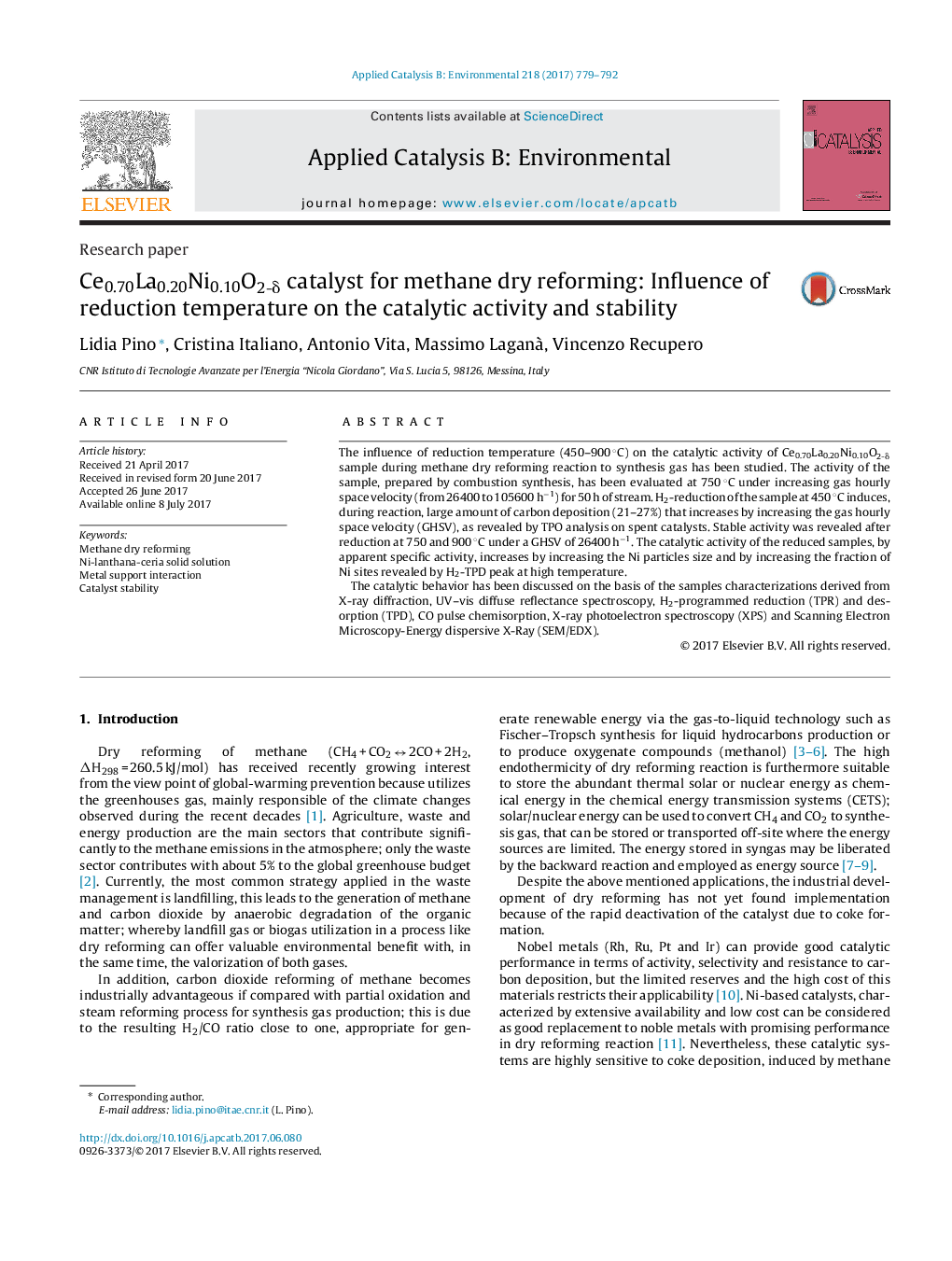| Article ID | Journal | Published Year | Pages | File Type |
|---|---|---|---|---|
| 6453849 | Applied Catalysis B: Environmental | 2017 | 14 Pages |
â¢Ce0.70La0.20Ni0.10O2-δ, catalyst for methane dry reforming reaction.â¢Ni-support interactions increase by increasing the reduction temperature; high resistance to carbon deposition.â¢Apparent specific activity, increases by increasing the nickel particles size.â¢Reduction at increasing temperature modify the morphology of nickel particles.â¢Bi-functional mechanism: methane decomposition-carbon removal by Ni-La2O3 interfacial sites as rate determining steps.
The influence of reduction temperature (450-900 °C) on the catalytic activity of Ce0.70La0.20Ni0.10O2-δ sample during methane dry reforming reaction to synthesis gas has been studied. The activity of the sample, prepared by combustion synthesis, has been evaluated at 750 °C under increasing gas hourly space velocity (from 26400 to 105600 hâ1) for 50 h of stream. H2-reduction of the sample at 450 °C induces, during reaction, large amount of carbon deposition (21-27%) that increases by increasing the gas hourly space velocity (GHSV), as revealed by TPO analysis on spent catalysts. Stable activity was revealed after reduction at 750 and 900 °C under a GHSV of 26400 hâ1. The catalytic activity of the reduced samples, by apparent specific activity, increases by increasing the Ni particles size and by increasing the fraction of Ni sites revealed by H2-TPD peak at high temperature.The catalytic behavior has been discussed on the basis of the samples characterizations derived from X-ray diffraction, UV-vis diffuse reflectance spectroscopy, H2-programmed reduction (TPR) and desorption (TPD), CO pulse chemisorption, X-ray photoelectron spectroscopy (XPS) and Scanning Electron Microscopy-Energy dispersive X-Ray (SEM/EDX).
Graphical abstractDownload high-res image (74KB)Download full-size image
